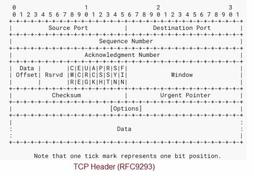IP Addresses: A Comprehensive Guide
Advertisement
This tutorial covers essential networking basics, including circuit switching vs. packet switching, TCP/IP protocol fields, ARP/RARP protocol fields, what an IP address is, what a MAC address is, and networking devices like hubs, switches, bridges, routers, gateways, and firewalls. This page describes the Internet Protocol Address, its classes, and commands.
Introduction to IP Addresses
IP stands for Internet Protocol Address. This is a crucial address used by any device (desktop, laptop, tablet, mobile, iPad) to connect to the internet.
To understand what an IP address is, let’s use a telephone system analogy. Just as a telephone number is required to connect to a circuit-switched telephone network, an IP address is needed by a device wanting to connect to a packet-switched network to obtain data service.
IP addresses are of two types: IPv4 and IPv6. IPv4 is in use worldwide, while IPv6 is under trial. The IP address is part of the TCP/IP Protocol Suite and is very important to understand.
Static vs. Dynamic IP Addresses
Unlike a telephone number, which is assigned by a telephone company or mobile service provider, an IP address can be assigned to the device by an Internet Service Provider (ISP). There are two ways a device can be assigned this IP address:
- Static/Manual Configuration: The IP address is manually configured on the device.
- Dynamic Assignment: The IP address is dynamically assigned to the device by a server located at the ISP’s premise.
The DHCP (Dynamic Host Configuration Protocol) assigns this dynamic IP address to the device requesting an internet data connection.
IPv4 Address Structure
An IPv4 address is a 32-bit number. IP addresses are usually written in “dotted decimal notation,” where a decimal number represents each of the octets of the 32-bit address.
For example, the IP address 11000000 11100100 00010001 00111001 is written as 192.228.17.57.
IP Address Classes
There are four main classes of IPv4 addresses: Class A, Class B, Class C, and Class D.
- Class A:
0, network (7 bits), host (24 bits) - Class B:
10, network (14 bits), host (16 bits) - Class C:
110, network (21 bits), host (8 bits) - Class D:
1110, rest of the bits are for multicast - Class E:
11110, rest of the bits are for future use
For Class C, the host ID space is 8 bits long, so hosts (i.e., computers) are supported. Therefore, the appropriate class is selected based on the needs of networks and hosts.
Remember the initial decimal digit (the first 8 bits) to differentiate between these four classes (i.e., network ID).
- Class A: Network ID is from 0 to 127
- Class B: Network ID is from 128 to 191
- Class C: Network ID is from 192 to 223
- Class D: Network ID is from 224 to 239
- Class E: Network ID is from 240 to 255
Reserved IP Addresses
For special purposes, some IP addresses are reserved, similar to telephone numbers reserved for emergency and special purposes.
127.0.0.1is the self loopback IP address used to check if the system’s Ethernet card is working or not. This is useful when you don’t know the IP address configured for the card.255.255.255.255(i.e.,FF:FF:FF:FF) is reserved for broadcast purposes.
IPv6
IPv6 includes 128-bit source and destination address fields. Eventually, all installations using TCP/IP are expected to migrate from the current IPv4 to IPv6, but this process will take time.
Commands to Know IP Address
In Windows
- Click START.
- Click Programs.
- Click Accessories.
- Click Command prompt.
- Type
ipconfig/all.
This will list the IP address as well as the MAC or physical address of the Ethernet card or chip embedded in the device.
In UNIX
Use the command: ifconfig
Commands to Test IP Network Connectivity
To determine whether a system is connected to an IP network or is reachable to a particular server or network through wired or wireless medium, use the ping command:
ping destination_ipaddress
For example:
ping 14.99.148.60
What ping does is send some known bytes to the destination computer with which the source computer wants to check IP connectivity. The destination computer replies with the same bytes, which the source computer compares with the original bytes sent to determine if all bytes were received correctly. This determines the connection status.
This is why IP addresses have become popular for devices to not only utilize internet services but also be used for remote control or automation.
Advertisement
 RF
RF




